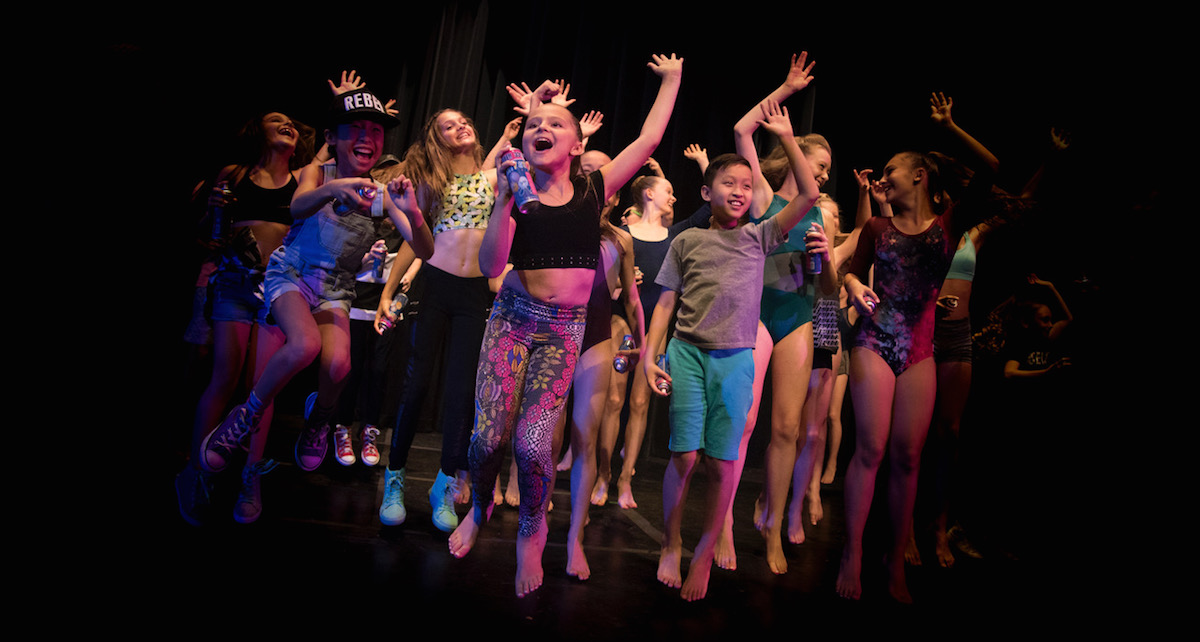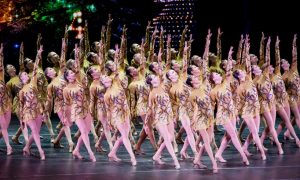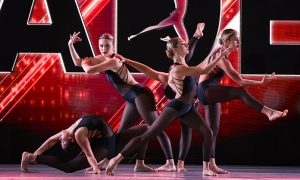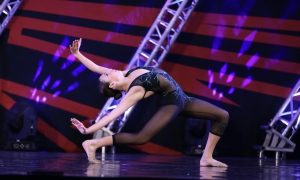One voice and a vision is all it takes to create change. Two strong voices and a shared vision for a more compassionate dance world, however, have enabled Larisa and Ryan Eronemo to create a new model for dance instruction at Glass House Dance in Sammamish, Washington. Larisa and Ryan are independently successful dancers with impressive resumes that include professional work in concert, competitive, academic and private areas of dance. Dance is their language, but developing a supportive community of strong individuals is their passion. To that end, Glass House Dance focuses on providing quality training for every dancer, regardless of technical level or future aspirations. The studio is three months old and already fulfilling its purpose to be a place where everyone who walks through its doors feels at home and safe. Here, Dance Informa speaks with Larisa and Ryan to learn more about why this mission is central to the couple’s goals for dance training.
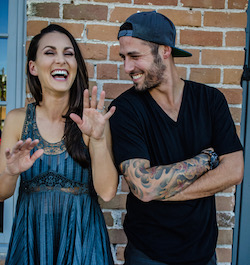
Larisa and Ryan Eronemo of Glass House Dance. Photo by Jennica Maes.
How do you want a student to feel when he/she walks into Glass House Dance?
“We want people to be comfortable. Dance is such a vulnerable art, or it can be, and we want them to feel like they can be imperfect, really try to learn and be able to put themselves out there.”
The Glass House Dance studio model promotes dance training as a catalyst for community. Please share more about your philosophy of utilizing dance in this way.
“Everything we do, we do as a whole community. For example, instead of having a company party, we have a whole-studio party. We try to break down the walls and labels, and we’re all one group together.
We try to create a culture where people feel invited and welcome. Parents feel welcome to watch classes and hang out. Kids feel safe behind one-way mirrors and can be vulnerable and work on their craft. If kids need to come early or stay late, they are really excited about it. Nobody wants to leave. Mom or Dad will come to pick them up and the kids are playing a game in the back. We’re really striving for a place where parents look forward to their time at the studio and kids are excited and don’t want to leave. We try to make it a place where everyone feels welcome and comfortable. We even have kids who come on their day off from dance, just to hang out with us. It’s really cool that parents feel this is a safe place for their kids to be. It’s all about creating space and time for the kids to be kids. Dance isn’t the most important thing; there’s school work, there are social skills. We thought if we could create a space where people wanted to be, they could also handle some of that other stuff, too.
We also have a Big Sis and Little Sis program. We make sure it’s available for everyone who wants to participate. It’s not required, but it’s a good way to pair a young dancer with an older dancer who can guide them. Our peer mentoring program is based on chance. There are no premediated partnerships or pairings at Glass House Dance. It’s just drawing names out of the hat, and you get who you get and you find the value in that. It’s also a good introduction from a business standpoint as well to bring all these different groups at the studio together. It strengthens the bond we all have with each other.
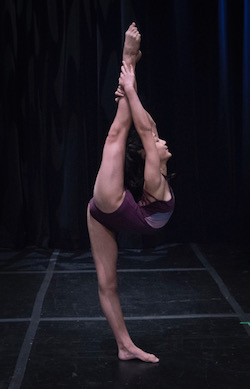
A Glass House Dance student. Photo by Jennica Maes.
We also give leadership opportunities to any of our students who are interested in leadership opportunities. We give chances for students to take on responsibilities, and that helps them feel safe, important and learn valuable life skills. We look for people who have the correct demeaner, motivation and attitude.”
How does Glass House Dance balance the needs of instructing students who want to train on a pre-professional level with the needs of students training recreationally?
“There are no competitive-only or recreational-only classes. Everything we do is based on age, skill level and genre. That helps us break down the labels of the different teams, groups and programs and bring everyone together. We are all going to take class with our same age group and skill level. You take class for the sake of taking class. Rehearsals schedules are totally separate from class. A lot of studios have blended classes and rehearsals and have two different worlds going on in one studio. We’ve tried to get as far away from that as possible because it really divides the community. We value every student the same.
All students are equal in our eyes. Everybody is equal in our community, whether they take one class and are six years old or they have fabulous potential in a professional manner and are 17 or 18 years old. Kids are always watching and learning. If they see a staff member or an instructor favoring a group or favoring a dancer, they pick up on that. They see where emphasis is put. When we really focus on everyone being a valuable member of our community, we see a lot more students treating each other in that manner.”
How do you ensure your instructors are vetted in your teaching philosophy?
“We feel like the dance world has become very focused on the teachers. In some strange universe, the teacher has become the star. We don’t like the direction that has gone. We feel like the students, the class, are the stars and that the teachers should be in the background. We think one of the biggest things we consider when hiring someone is if the person is truly and genuinely humble, warm and inviting.
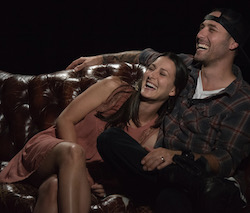
Larisa and Ryan Eronemo of Glass House Dance. Photo by Jennica Maes.
Super stocked resumes are incredible, but if that teacher can’t connect with the students and the parents, that resume means nothing to us. At the end of the day, it’s not about them; it’s about the student, how we can bring out that student and how his or her parents feel about it. We are looking for characteristics that don’t always fit into a traditional resume. If we feel good about a person on a human level, we have found that person is exactly what we want in the studio. We try to find teachers who are willing and able to teach kids how to think for themselves. We want to create unique dancers and artists.”
Your class offerings and schedule are diverse. How do you decide if something is a good fit for your schedule?
“This has been really crazy trying to figure out. Our schedule has probably changed at least 20 times since we opened. We look at our parents and students as our clients and focus on being customer-centric. That’s our number one guiding principle. We constantly listen to our community and approach things as a concierge service. That guides us in every decision we make. We start with what’s good for our students and what’s good for our families and then figure out how can we make that happen from a business standpoint. Somewhere along the lines, that was lost in many studios as teachers and owners became the client and felt that students were lucky to pay to take classes from them.
We also offer trial classes in every genre so that we can expose our students to everything that we offer. They may have come in for hip hop and fallen in love with jazz. That helps us from a business standpoint and helps the students be happy with the classes they are in. They grow a deeper love for the art from and are happy in their classes.”
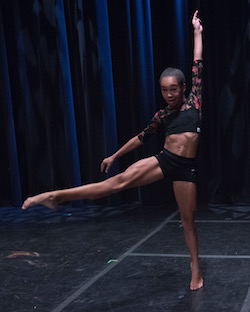
A Glass House Dance student. Photo by Jennica Maes.
How do you stay centered on your mission when things get tough?
“The biggest thing we do is make time for ourselves and our family. There’s a never-ending ‘to-do’ list, and every studio owner tends to feel that everything is mission critical every step of the way. Even though we also feel like that, we try to take a step back at least once a week and do something just for us. It may be not working a day, or making breakfast as a family. We try to make sure our personal life is good, so that when we’re at the business, we’re in a good place. If our personal life suffers, so does our business.”
At what point in your career did you realize this business model was crucial to your happiness?
“This is a tough one. We said for years and years and years that we’d never open a studio. The turning point was really two-fold, and I hope I’m not being too blunt. I think we saw the paradigm that the industry was currently taking. As instructors teaching on a national scale, we saw some of the damaging results of the exclusivity. For awhile, we felt like we could affect positive change from an instructor’s standpoint, and then it got to a point where we felt like we couldn’t fix some of the damage we saw being caused. We thought the only way we could affect change was to start our own studio and create the culture we believed in – one that would build a dancer up and not tear them down.
We want to make students feel safe and like they can take risks and fail & know that nothing will be held over their heads. They can just be them. We saw some things we didn’t like and set out on a mission to create a place where those things wouldn’t happen and where we can build up our students in the way we think is necessary for a kid. Life is hard enough already if you’re six or 13 years old, and it doesn’t get easier as an adult. We feel there are some things people shouldn’t be dealing with. We hope our community and the culture we create is a place where those things don’t happen.”
Visit www.glasshousedance.com and youtu.be/v7fPl20nvUQ to learn more about Larisa, Ryan and all things Glass House Dance. Glass House Dance can be contacted at info@glasshousedance.com or 425-399-2353.
By Emily Yewell Volin of Dance Informa.


